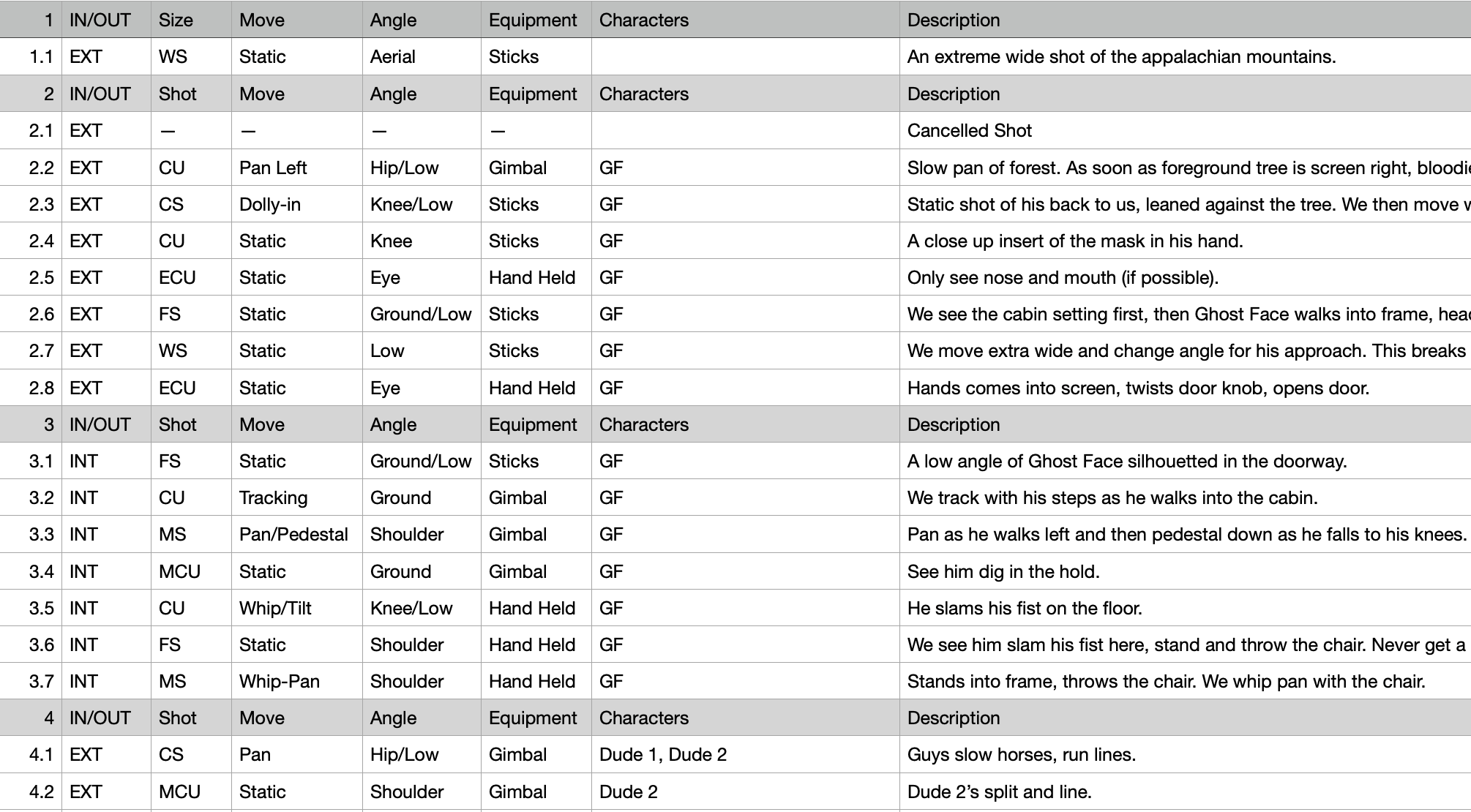
A shot list details out every camera setup for each scene in a movie. Shots lists allow the director to plan ahead of time in order to be more creative on set. They’re a part of pre-production that can have the most impact on production.
After a screenwriter is done writing the script, who do you think sees the movie first?
The Director.
Part of the director’s job during pre-production is to “see” the entire film ahead of time. By this I don’t mean some relaxed, dreamlike state on a beach sipping tropical drinks. It’s a meticulous task of visualizing every shot for every scene of the movie. This is done via story boards and a shot list.
A director must visualize the entire film ahead of time. It’s meticulous shot by shot planning.
Stick in one of your favorite films, watch the first 5 minutes and count every time the camera cuts to a different shot. A prepared director sees all of this before anyone’s holding a camera.
So you’re a one-man crew? You still need to plan your shots. Waiting until you’re on set will cause you to end up with a film that isn’t what it could have been.
As Louis Pasteur said: “Fortune favors the prepared mind.”
Below is a sample shot list from the short film RECKONING:

There isn’t a single right way to record your shots. Some filmmakers use software like Studio Binder or Celtx. Personally, I prefer a spreadsheet that references every shot with an associated story board.
When you break down your script, each scene is given a number. This allows you to map things like your shot list back to the script even when there are changes.
Every camera setup needs a new shot number. For example, you’re shooting a wide shot of someone and want to move to a medium close up. That’s a new camera setup. As are angle changes, etc. Start with number one and assign a number to each one of your shots for a particular scene. Scene 7 might only have 3 shots while scene 22 has 15. Personally, I use a decimal system. Scene 3 setup 5 would be labeled 3.5 on the corresponding story board.
Describe your vision for the shot. How are you affecting tone or character? What’s the purpose of this shot? Is there action in it? What is the intended emotional charge?
This describes what the camera sees as it relates to your subject.
WS (Wide Shot)
FS (Full Shot)
CS (Cowboy Shot)
MS (Medium Shot)
MCU (Medium Close Up)
CU (Close Up)
ECU (Extreme Close Up)
OTS (Over the Shoulder)
POV (Point of View)
The angle of the camera drastically effects the feel of the shot. What do you want the audience to feel in this particular scene and setup?
Eye Level
Low Angle
High Angle
Hip Level
Knee Level
Ground Level
Shoulder Level
Dutch Angle
Overhead
Aerial
Will this be a moving shot? A classic example is The Dark Knight when the Joker first enters the pent house party. He’s moving the entire time, and this would all be noted on the shot list.
Pan
Whip-Pan
Tilt
Whip-Tilt
Dolly
Truck
Pedestal
Zoom
If this is a static shot you’ll have the camera on sticks (stand). If it’s a tracking shot, are you using a gimbal or dolly? You’ll also want to be specific about the lens. Do you want a wide 24mm lens, or a 50mm for a more normal field of view? These creative choices affect your story, and require a lot of forethought. Remember, the most you prepare ahead of time, the more freedom you have to be creative during production.
Is this an interior (INT) or exterior (EXT) shot?
Who or what is the subject of the shot?
You’re no longer wondering what a shot list is, and hopefully you see how it can help you prepare for your shoot!
I can’t stress enough how crucial it is to take time and see your film in your head before you ever start shooting. A great way to get ideas is to spin up some of your favorite films and watch them without sound. This will force you to study camera movements and learn from pro filmmakers.
Have fun with this! And remember, you’re not pouring cement. You can change this during production. But the work you put in now will pay off big time later.
If your answer is yes, Write & Direct is your inciting incident. It's your catalyst in the journey to becoming a filmmaker. There's nothing else quite like it. Enroll today or find out more below: